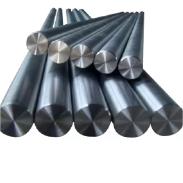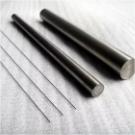**Forging Digital Steel: Photoshop CS5 Tricks for Crafting a Metal Plate Masterpiece**
(How To Create Metal Plate In Photoshop Cs5)
Creating a realistic metal plate in Photoshop CS5 isn’t as hard as you think. You just need some patience and a few basic tools. Let’s break it down step by step.
Start by opening Photoshop and making a new document. Set the size to something like 1000×1000 pixels. This gives enough space to work. Pick a dark gray color for the background. Black might look too harsh, but dark gray adds depth.
Next, create a new layer. Name this layer “Metal Base.” Use the Rectangle Tool to draw a square or rectangle. This will be your metal plate. Fill it with a medium gray color. Avoid pure gray—something closer to #808080 works better.
Now, add texture. Go to Filter > Noise > Add Noise. Set the amount to around 10-15%. Check “Monochromatic” to keep the noise subtle. This mimics the gritty feel of real metal. Hit OK.
Time to add depth. Double-click the “Metal Base” layer to open Layer Styles. Apply Bevel and Emboss. Set the depth to 200-300%, size to 5-10 pixels. Choose “Chisel Hard” for the technique. Adjust the angle to 120 degrees. Tweak the highlight and shadow opacities to around 70%. This creates a 3D effect.
Add a gradient overlay. Pick a silver-to-dark-gray gradient. Set the blend mode to Overlay. Reduce the opacity to 60-70%. This makes the metal look weathered. Click OK.
Now, refine the lighting. Create a new layer above the metal base. Name it “Highlights.” Use a soft white brush with low opacity (around 20%). Paint along the top and left edges of the metal plate. This mimics light hitting the surface. Switch to a dark brush. Paint shadows on the bottom and right edges.
Scratches and dents make metal look real. Create a new layer called “Damage.” Use a small, hard brush with black color. Draw random scratches and spots. Vary the brush size for realism. Lower the layer opacity to 30-40%.
Add color adjustments. Go to Image > Adjustments > Color Balance. Slide the midtones slightly toward blue or yellow. This tweak depends on the metal type. For steel, a hint of blue works. For aged iron, add a touch of brown.
Boost contrast. Duplicate the metal base layer. Set the blend mode to Overlay. Reduce opacity to 30%. This makes the texture pop.
Add a drop shadow. Right-click the metal base layer. Choose “Drop Shadow.” Set distance to 10 pixels, size to 15 pixels. Keep opacity around 50%. This lifts the plate off the background.
Fine-tune details. Zoom in and check for smooth edges. Use the Smudge Tool to soften harsh spots. Add more noise if the surface looks too clean.
Save your work. Export as a PNG to keep transparency. Now you’ve got a metal plate ready for posters, game assets, or mock-ups.
Experiment with different shapes. Try circles or hexagons. Adjust colors for gold, copper, or rusted effects. Layer styles are flexible—play with settings until it clicks.
Remember, imperfections matter. Real metal isn’t flawless. Add more scratches, adjust lighting angles, or tweak the gradient. Small changes make big differences.
Photoshop CS5 might feel outdated, but its tools are powerful. Mastering basics like layers, filters, and brushes unlocks endless creativity. Metal textures are just the start. Once you nail this, leather, wood, or glass become easier.
(How To Create Metal Plate In Photoshop Cs5)
Keep practicing. Save different versions. Compare results. Over time, your workflow gets faster. What seems tricky now will soon feel second nature.
Inquiry us
if you want to want to know more, please feel free to contact us. (nanotrun@yahoo.com)


